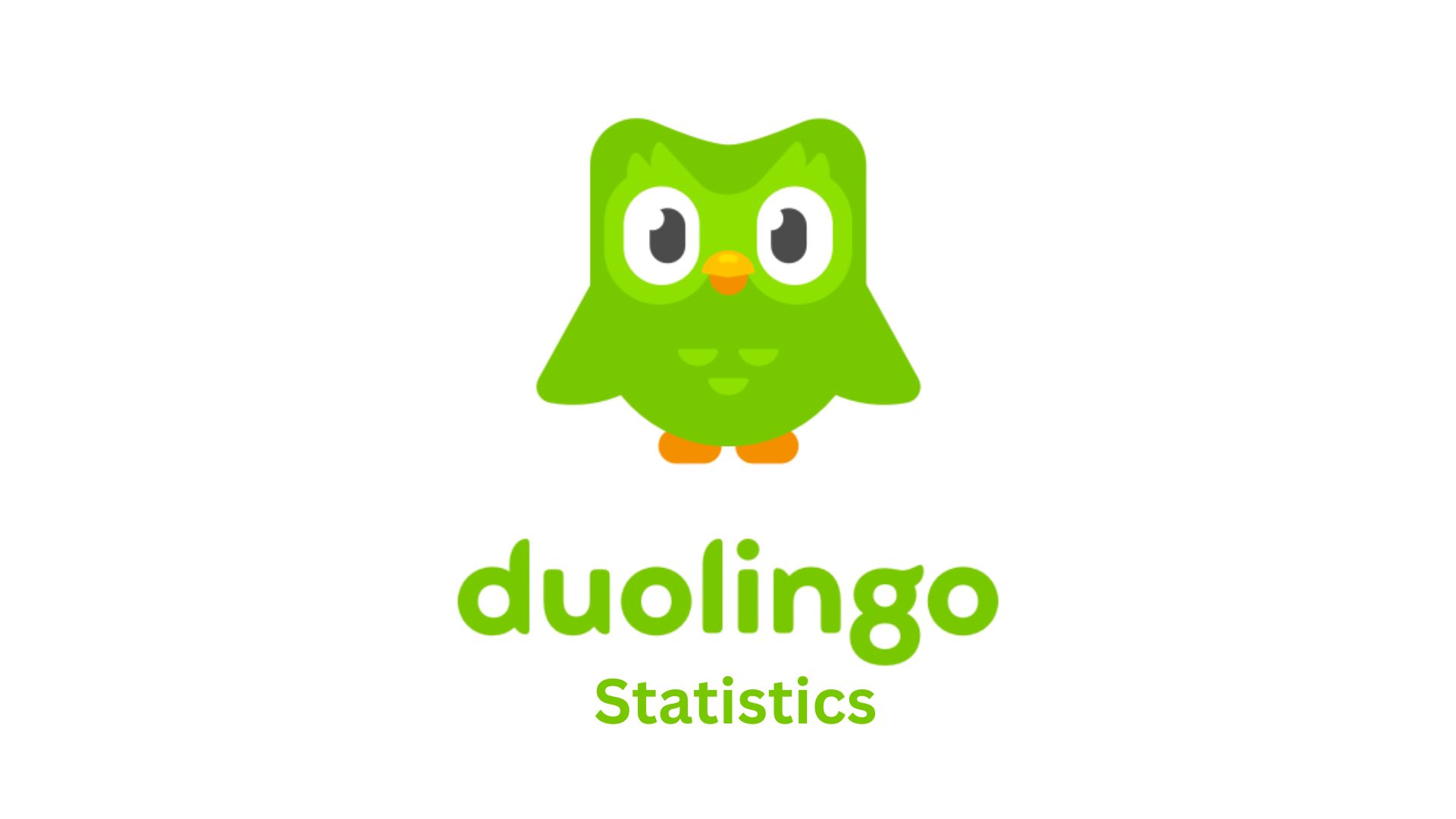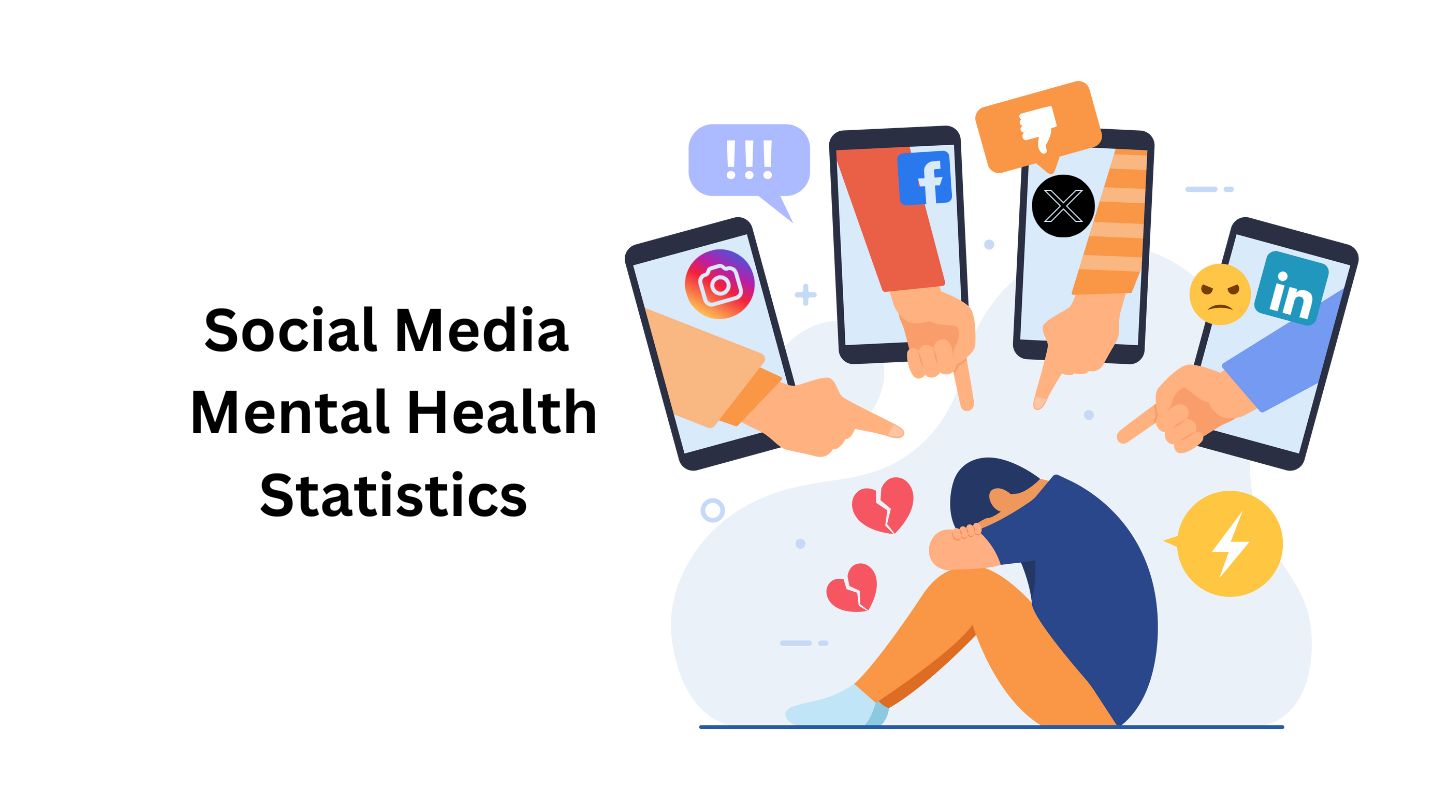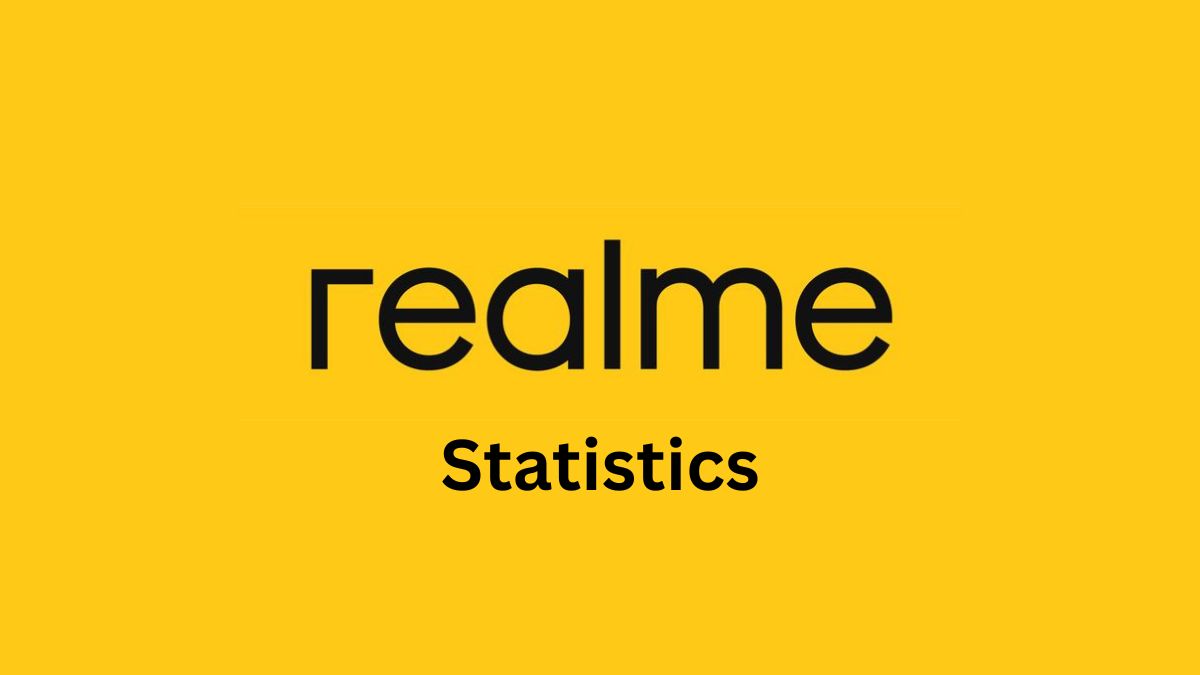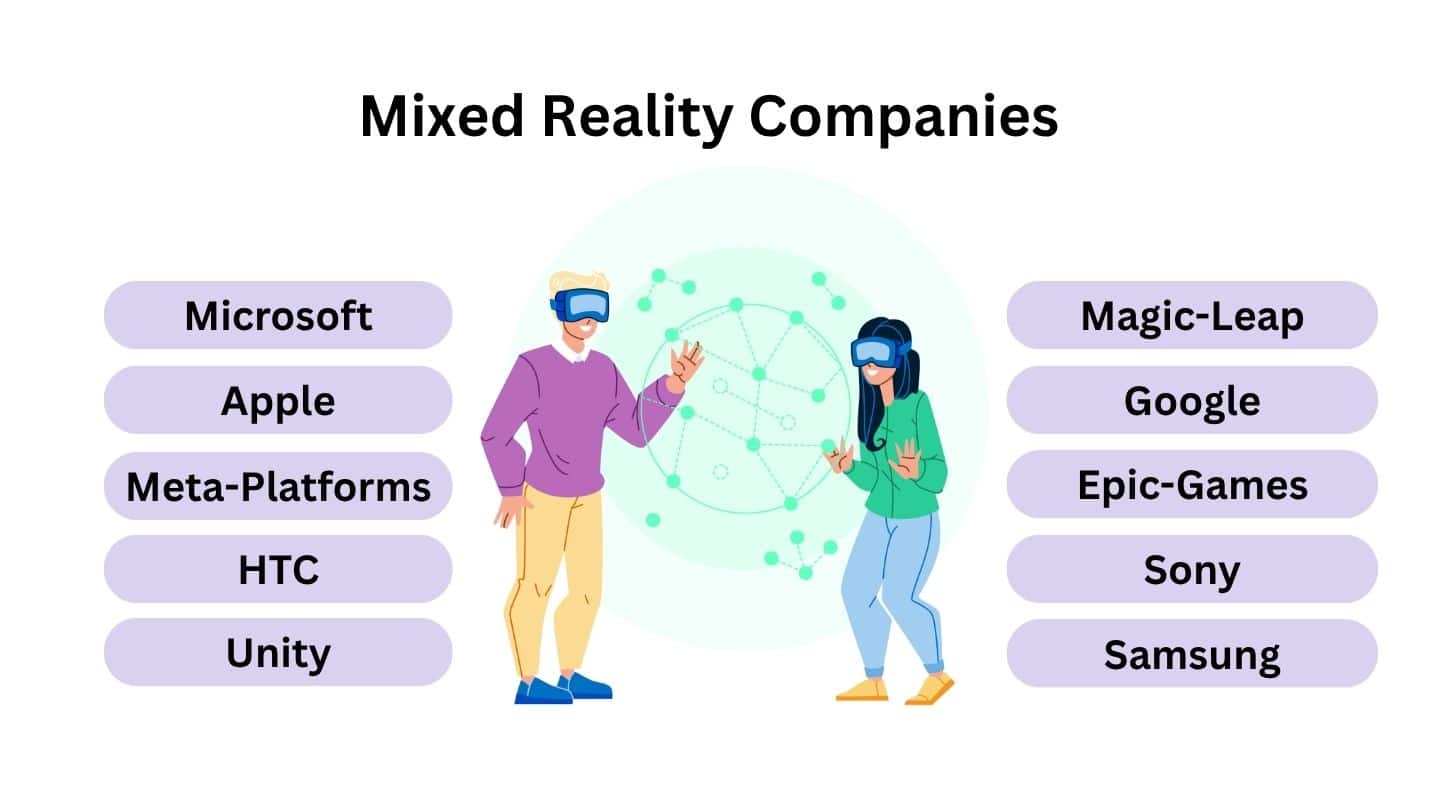Spotify vs Pandora Statistics By Revenue, Users And Facts (2025)
Updated · Oct 20, 2025
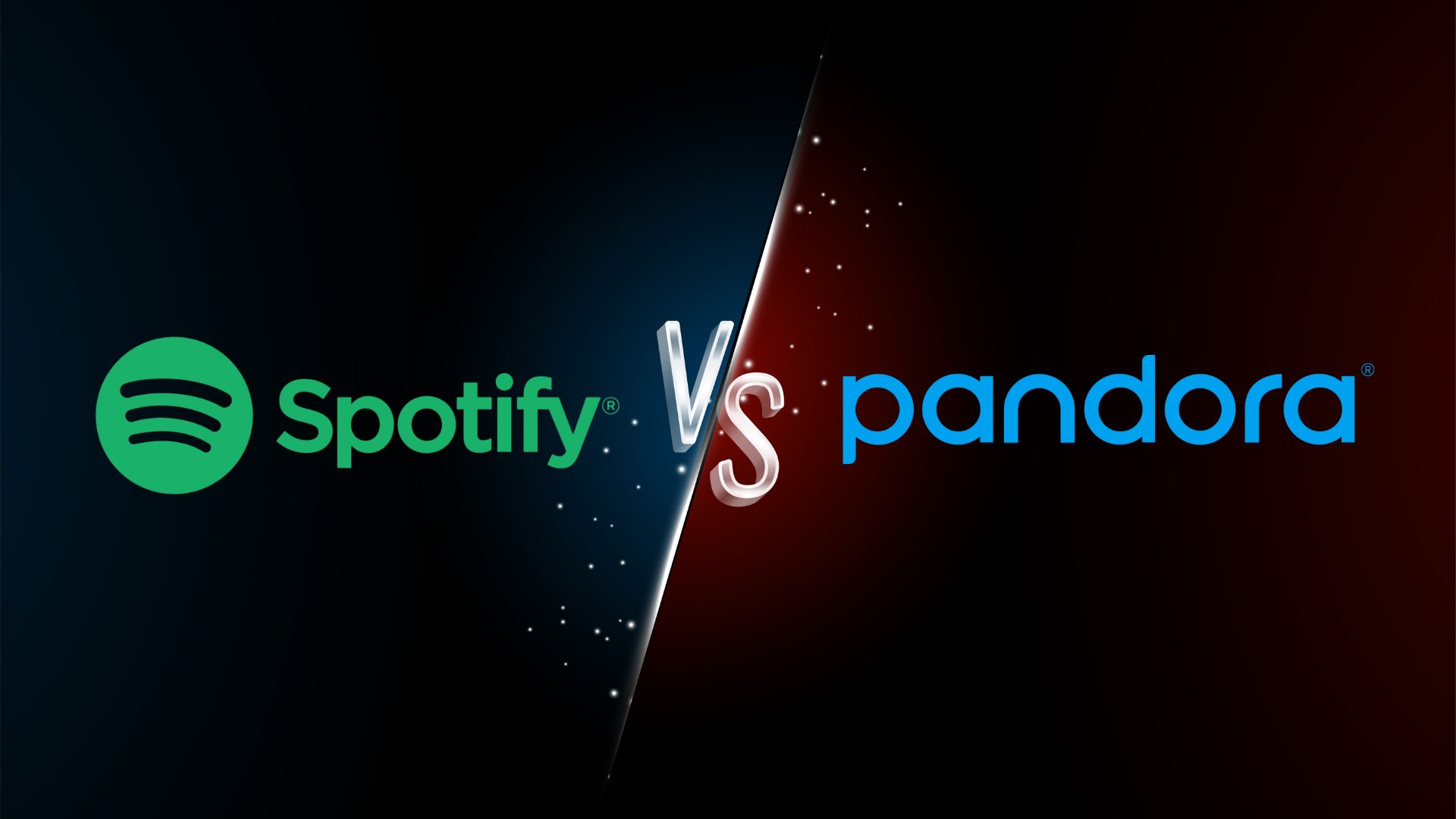
Table of Contents
Introduction
Spotify vs Pandora Statistics: In this fast-growing industry of music streaming, another playground for two giants is Spotify and Pandora, although they have wandered along very separate paths in this matter. Hence, in 2024, Spotify remained steadfast in its global leadership position with hundreds of millions of users and billions in revenue. Meanwhile, Pandora still holds its place with the familiar personalised radio-style service in the United States.
This comparative analysis considers both Spotify vs Pandora statistics over six important facets: user base, revenue, market share, usage habits, platform features, and artist compensation. Each section will present unambiguous, quantifiable data for ease of understanding of the performance of these services over the year.
Editor’s Choice
- When it comes to generating revenue, Spotify’s €13 billion-plus in 2023 and €3.99 billion for the third quarter of 2024 have undoubtedly surpassed Pandora’s US$2.113 billion revenue in 2023, a growth at a much gentler pace.
- By the end of 2024, Spotify will have sat pretty with 678 million active users monthly and 265 million premium subscribers.
- Pandora, on the other hand, has witnessed an exodus in active user creation, going down to just over 46 million, with paying subscriptions below 8 million.
- Spotify, enjoying international reach, commands a space of 30.5% in terms of music streaming subscriptions market share, while the fewest shares go to Pandora, concentrated within the U.S.
- Pandora’s main revenue source was the advertising model, raking up US$1.6 billion in 2023, with just US$524 million attributed to advertising, whereas Spotify Premium earned around €13.82 billion.
- Spotify spent €1.73 billion on R&D in 2023 and disbursed royalties to artists worth more than US$9 billion, while Pandora went for a split of around 50% of its revenues as licensing costs and gave out royalties at a rate much lower than that of Spotify, at about US$0.0013 per stream as against US$0.003–US$0.005 by Spotify.
- Spotify, with net income of €1.138 billion in 2024, made it a profitable company for the very first time in full-year, whereas Pandora does not report any such financial breakouts since being acquired by SiriusXM.
- Spotify users averaged two minutes and 55 seconds per listening session, with users actively selecting tracks; Pandora users averaged seven minutes and 57 seconds, with stick-to-itiveness and radio-like listening.
- With 82 million songs available for streaming, Spotify gave users a better choice in music compared to Pandora, which had only 50 million songs and had a limited number of skips, offline listening, and customisation for its playlists with more frequent ad interruptions.
- Spotify supports advanced platform compatibility and music sharing, while Pandora supports parental controls and TV app integration, but falls short of Spotify’s international flexibility and advanced user interface.
Spotify vs Pandora Revenue
Spotify Revenue
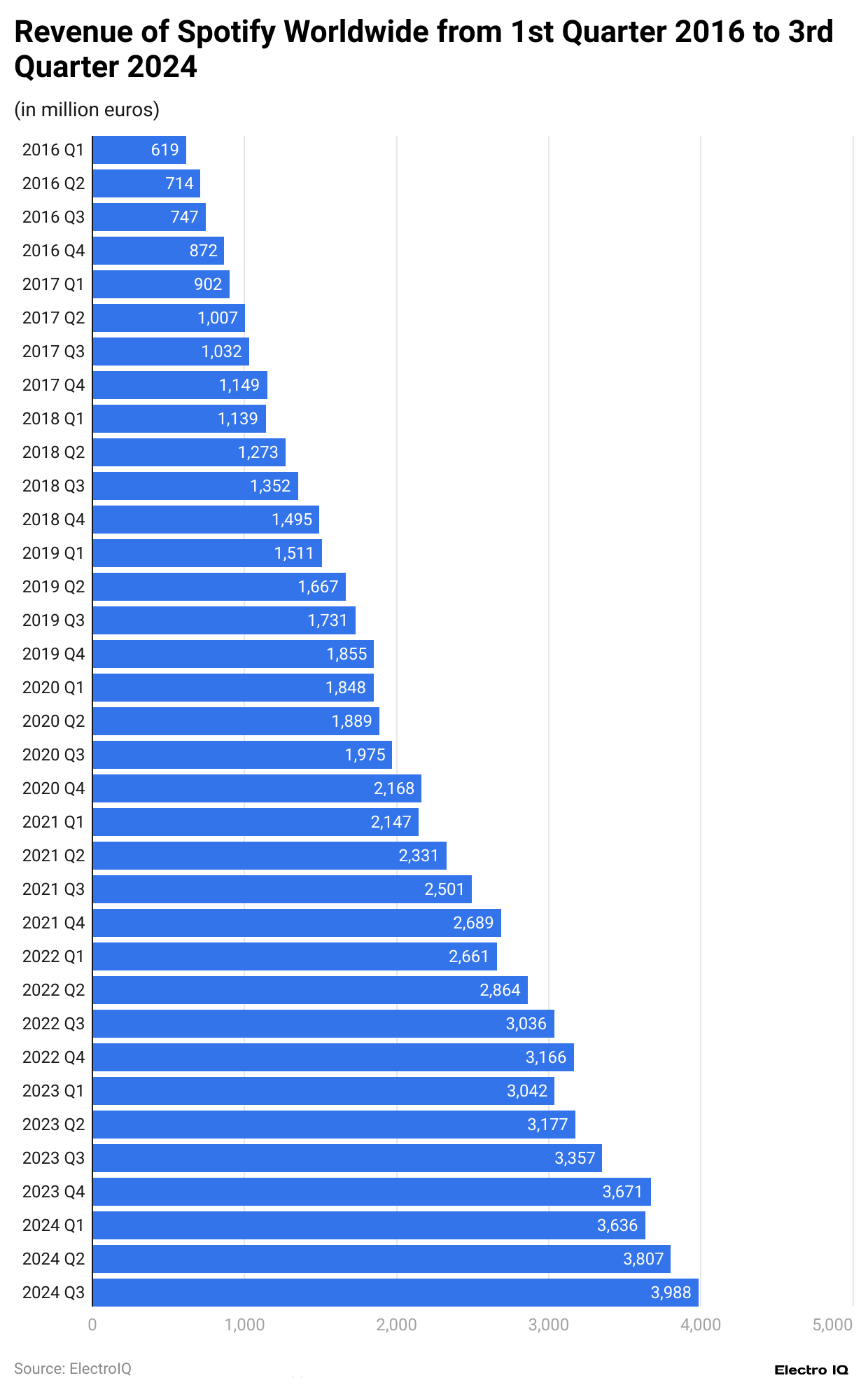
(Reference: statista.com)
Pandora Revenue
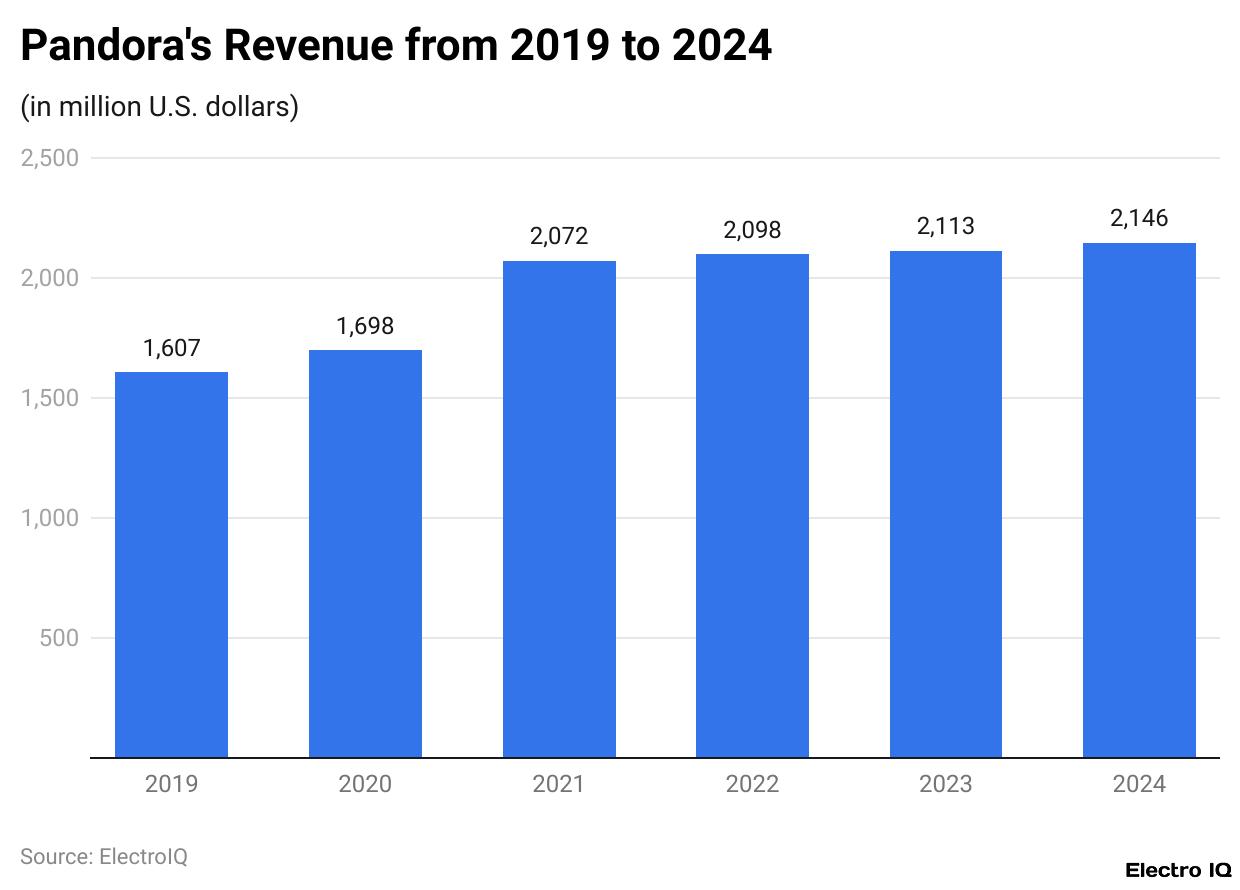
(Reference: statista.com)
- The continuously unfolding music streaming industry has ever-challenged the key giants in its services, which include Spotify and Pandora.
- According to a Statista report, Spotify vs Pandora statistics show that Spotify entered the realms of constantly moving upward in quarterly revenues, reaching €3.99 billion by the Q3 of 2024 and hitting a record of annual revenue higher than €13 billion in 2023.
- Meanwhile, Pandora, which SiriusXM purchased in 2019, announced revenues of US$2.113 billion for 2023, representing modest but steady growth from US$2.098 billion the year before.
- While Spotify Premium subscribers soared to 252 million in Q3 2024 from 226 million in Q3 2023, Pandora’s user and revenue growth have been slower, steadily increasing year-on-year since the acquisition.
- Spotify’s financial journey has been quite different, with six consecutive quarters of operating losses from late 2021 through early 2023, hitting the peak of a €156 million loss in Q1 2023 and then bouncing back into a net operating income of €266 million by Q2 2024.
- Pandora has not experienced such dramatic fluctuations but has also not come close to matching the scale of Spotify’s profitability or investment.
- Accordingly, heavy research and development investment has been made by Spotify, accounting for €1.73 billion in 2023 alone, while acquisition has been the other focus of expansion, particularly in the podcast area, which largely formed the basis for the losses in the earlier period.
- However, against all odds, Spotify still announced a gross profit of €3.39 billion in the year 2023, backed by an overwhelming 30.5% share of the music streaming subscription market compared to Apple Music’s 13.7%.
- Emerging platforms like Deezer, going public at the end of 2022, claimed gross profits of €65.1 million in its first year, thus showing there is room to grow and indeed for new entries in such a competitive landscape.
Spotify vs Pandora’s Active Users
Spotify Monthly Active Users
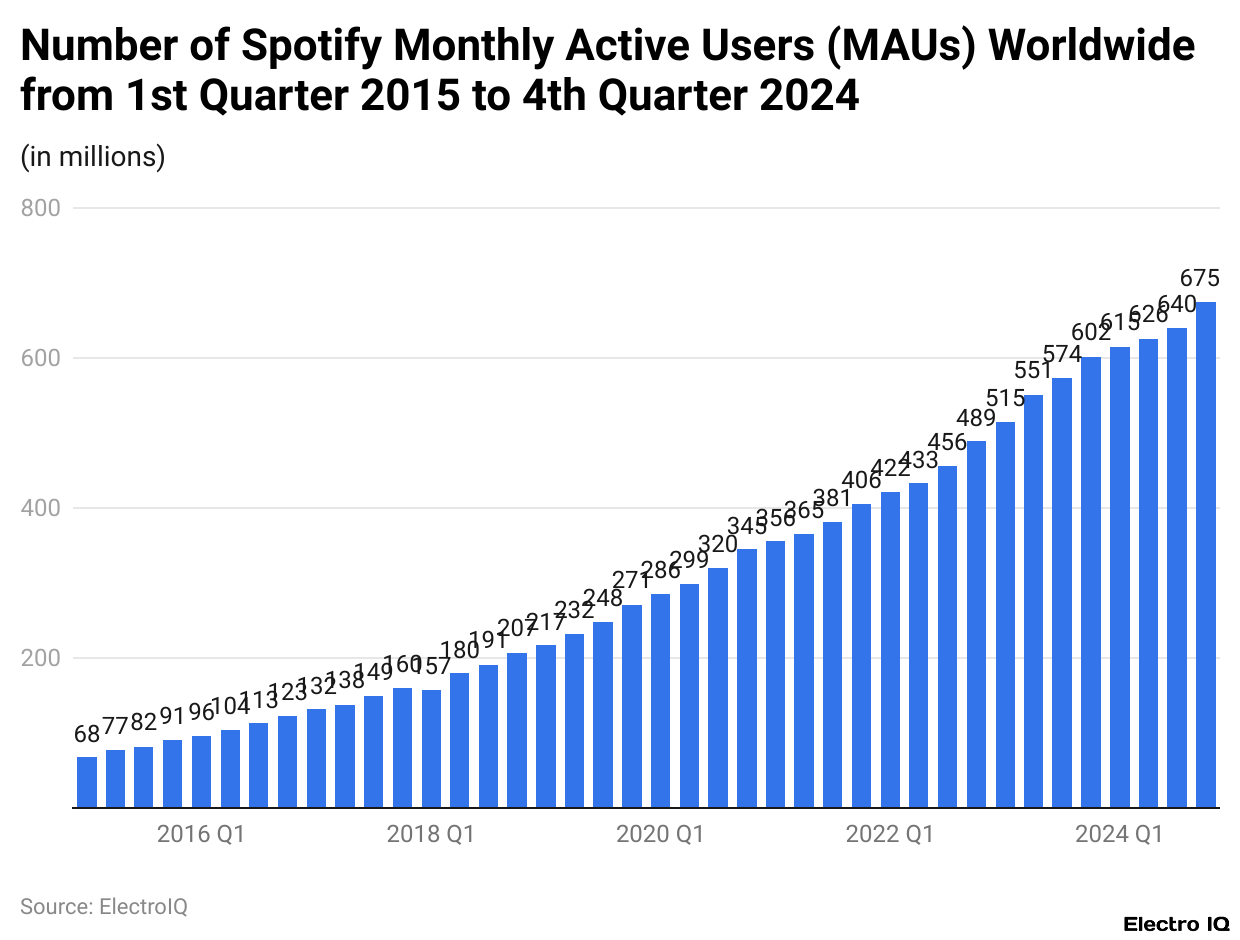
(Reference: statista.com)
Pandora Quarterly Active Users

(Reference: statista.com)
- Hardly anyone would have guessed that such a tiny startup from Stockholm would turn out to be the world’s most used music streaming platform at a time when streaming was just a niche and accounted for a trivial share of global music revenue.
- On the other hand, Pandora, with its earlier inception date of 2000, once held dominant status in internet radio, especially in the U.S. Spotify’s beginning was slow; by its fifth anniversary in 2013, it had 30 million active users and 8 million premium subscribers.
- By late 2024, it would claim its mighty numbers of 678 million active users, including 265 million premium subscribers, while retaining the imprint of its global expansion.
- Featuring Pandora, its buffet began in 2016, which saw 81 million users; since then, its decline has been steady, with active users residing in the United States dropping to just above 46 million in December 2023, thus losing more than 10 million over two years.
- After years of massive struggles to make profits, with losses aggregating to more than €4 billion from 2009 to 2023, Spotify finally underwent a breakthrough in 2024 by declaring the first-ever annual profit of €1,138 million (USUS$1,180 million), thereby restoring investor confidence and ensuring long-term profitability.
- Pandora, on the other hand, had to restrict itself to the U.S., Australia, and New Zealand, thus giving it little opportunity to counter Spotify’s wide geographical reach that, by mid-2016, already boasted more than 100 million users across Europe, certain parts of South America, and elsewhere.
- Ultimately, Pandora excelled within its niche but is now weakened by Spotify’s audacious streaming play early on, ostensibly wider market reach, and financial breakthrough.
Spotify vs Pandora Revenue By Segment
Spotify

(Source: usesignhouse.com)
Pandora
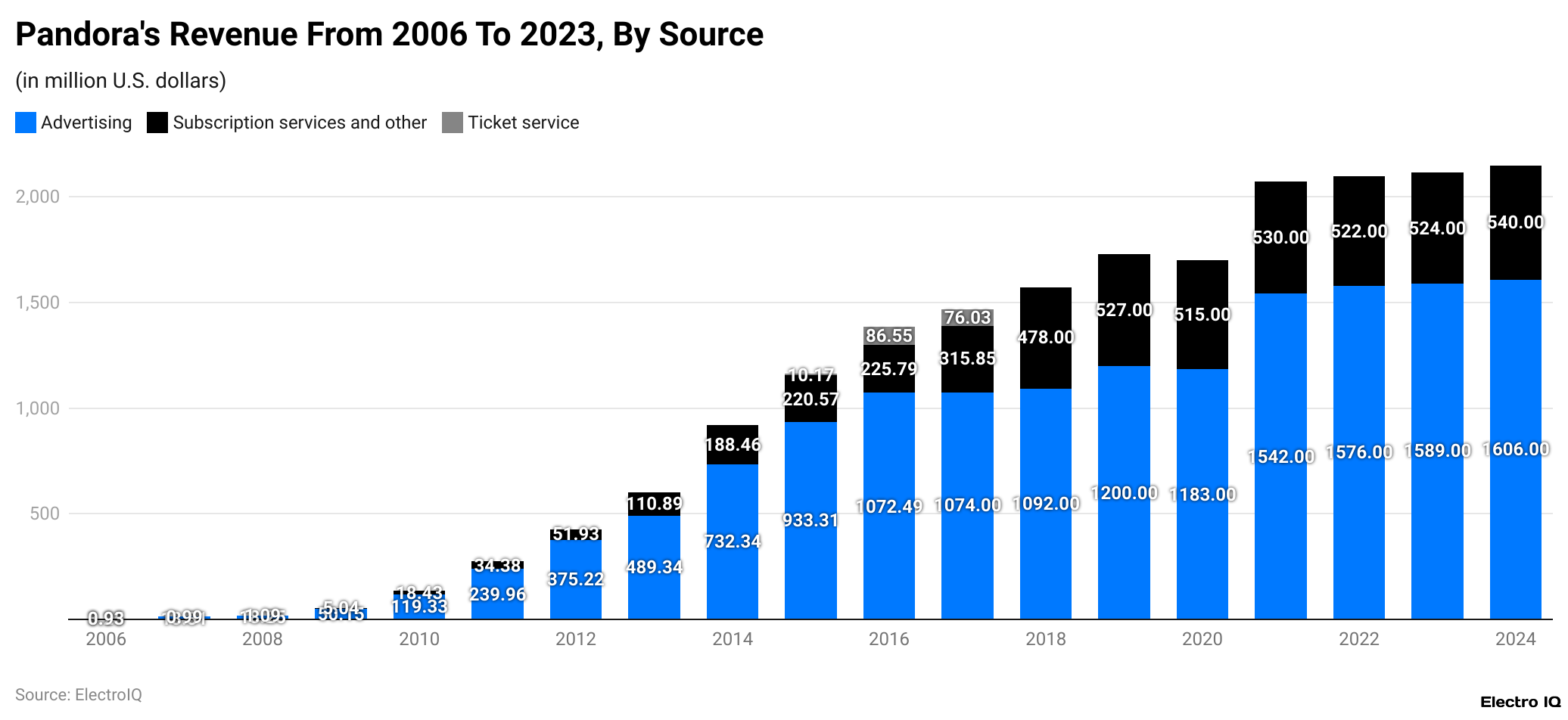
(Reference: statista.com)
- During the last fiscal period, the reported gross income by Spotify was about €13.82 billion from the premium tier, and it got €1.85 billion from the ad-supported tier, representing the highest revenue figures ever announced by the company.
- Spotify vs Pandora statistics for the year 2017 indicate the premium revenue increased by more than €10 billion, a significant growth demonstrating Spotify’s rapid financial growth.
- In stark contrast, Pandora earned US$1.72 billion in its annual revenues for the entire year of 2019, of which US$1.2 billion was generated via the advertising system on which Pandora largely depends.
- Spotify, still the market leader for music streaming, did so on the back of its massive global subscription base, which had grown to 252 million premium subscribers by Q3 2024.
- Substitute those numbers with Pandora, positioned at 6.92 million paying subscribers in 2018 and still facing conversion challenges moving free users to paid.
- Over 60 million active users were reported by Pandora in Q1 2020; however, most of them were free-tier users, making revenue through ads and not through subscriptions..
- While truly global in perspective, Spotify contrasts significantly with Pandora in its restricted appeal. More than 26% of persons between the ages of 18 and 34 reported using Spotify in the U.S. in 2018, which could imply good market penetration with the younger lot.
- Pandora, with its model very much like a traditional radio station rather than curated playlists, simply never caught on with the users. Apple Music, with its loyal user base integrated with Apple devices, is perhaps the closest competitor to Spotify; however, its number of global subscribers is barely half that of Spotify.
- The Pandora satellite could have been a worthy competitor; however, the company was never able to contend effectively with Spotify for the building of a solid premium subscriber base.
- With a large infusion of capital from Sirius XM in 2017, the company was purchased outright by Sirius XM in early 2019.
- While Sirius continues investment in entrant offerings, the vacuum created by the fall of the last high-maintained position of Spotify seems to be safe, to all intents and purposes, for now.
- Pandora’s advertising spending stands at US$1.6 billion in 2023, reflecting ongoing efforts of monetisation, but the year still saw a slight decline of US$524 million in ad revenues.
Spotify vs Pandora – Revenue Models And Royalty Payments
- According to Investopedia, Spotify vs Pandora statistics show that both Spotify and Pandora offer free listening with advertisements and subscriptions, but their businesses work in two quite different ways.
- Pandora earns a majority of its advertising revenue “like traditional radio.” Advertisements appear in playlists for free use.
- Reportedly, close to 50% of the revenue Pandora generates is then used as licensing fees to pay content owners.
- As of early 2025, Pandora has nearly 7.85 million users on its paid plans, offering discounts to students and military personnel. In the realm of royalties, Pandora pays relatively low rates of about US$0.0013 per stream as of 2025.
- On the other hand, Spotify enjoys a considerably larger paying subscriber base, amounting to about 252 million by Q3 2024.
- It allows its users to listen for free with advertisements, but most of its revenue comes from premium subscriptions.
- Spotify’s number-one expense has always been royalty payments; it paid more than US$9 billion in royalties to labels and publishers in 2023 alone.
- The royalty rate on Spotify is higher than on Pandora, ranging between US$0.003 and US$0.005 per play in 2025.
- Initially, Spotify had to face criticism for being among the lowest royalty payers in the industry, but it improved its payment systems over time.
Spotify vs Pandora Average Listening Sessions
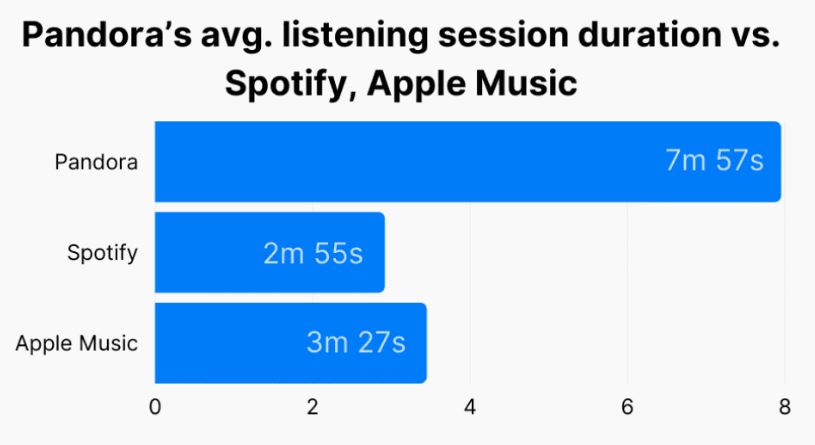
(Source: coolest-gadgets.com)
- According to Headphonesaddict, Spotify vs Pandora statistics reveal that different major music streaming platforms have varying average session durations per listen, revealing differences between user behaviour, content delivery, and engagement strategies.
- Pandora users spend the most time listening, with an average session of 7 minutes and 57 seconds. This longer listening duration is in part due to Pandora’s radio-like setup, meant to work continuously as passive listening.
- Usually, users select a station provided it’s based on a genre or artist, and the platform auto-generates a never-ending stream of similar music. This type of passive interaction with the platform is highly discouraged in the user interface since it requires close attention and active selection of tracks.
- It does well for background listening when at home, commuting, or even while studying and working. Spotify users have a very different experience while listening, with the average session standing at about 2 minutes and 55 seconds.
- This comparatively shorter session duration is an indication of sessions that are more likely to be intentional and curated.
- Most of the time, users interact with playlists, an album, or a podcast, jumping in and out of the application.
- Spotify’s interface follows active discovery and personalised playlists, whereas the on-demand model potentially increases the chance of shorter consumption time, especially when users are dropping in to search tracks or skipping songs.
- Apple Music lies somewhere in between with an average session time of 3 minutes and 27 seconds. It is like Spotify in its offering of on-demand streaming, but has an ecosystem more tightly knit with iOS devices, with an appeal inclined toward album-based listening.
- Apple Music listeners might tend to fully listen to songs or albums without interruption, giving sessions a slightly longer airtime than Spotify but nowhere near Pandora’s.
Spotify vs Pandora Employees
- Workforce-wise, Spotify vs Pandora statistics show contrasting trajectories, indicative of their respective industries.
- Having to operate in the environment of music streaming, Spotify saw some drastic changes in its employee count, more recently.
- After reaching a workforce peak of 9,123 employees at the start of 2023, Spotify was forced to undertake massive layoffs as part of the operational restructuring, reducing the headcount at the closure of that same year.
- This was a shift from the steady growth witnessed in previous years, with 8,359 in 2022, 6,617 in 2021, and 5,584 in 2020, going down steadily to just 311 in 2011.
- The rapid growth in staffing signifies the transition of Spotify into a huge digital music player on the world stage.
- Going the other way is Pandora, an international jewellery manufacturer, having a steady workforce growing force, with employment rising over the years, along with strategic developments and market expansions.
- By 2023, Pandora employed approximately 27,480 people worldwide, enabling the company to scale human resources whenever needed.
- Unlike Spotify, whose more erratic growth can be attributed to the pilots of the tech sector, Pandora’s increase in employees mirrors its somewhat stable and labour-heavy jewellery manufacturing sector.
General Spotify Vs Pandora Statistics
- Spotify and Pandora differ in several key ways, various aspects of reach, and content offerings. Spotify has a global presence from its base in Sweden, whereas Pandora is primarily serving selected countries.
- Spotify boasts an 82 million song library, while Pandora maintains a fractional catalogue of some 50 million songs.
- While Pandora’s subscription rates are mostly lower, Spotify was far more accessible with its freemium model, promoting a three-month pay-a-dollar trial.
- Spotify allows unlimited song skips, while Pandora imposes a set limitation of 30 skips per day and six per hour.
- On the side of playlist creation, Spotify is leading since users are free to create an unlimited number of playlists, which is something Pandora does not allow.
- Spotify also offers offline listening for premium users, better audio quality, and traditional radio for free.
- In contrast, Pandora offers offline listening; the main experience is more of a personalised Internet radio, often interrupted by commercial breaks in the ad-supported model.
- Sunshine Mobility also varies, where both are accessible through mobile, desktop, and Android, but Pandora limits the usability to TV-based platforms.
- Other than that, Pandora has parental control features, which Spotify lacks. Spotify is considered more advanced and flexible in music-sharing abilities, which makes the platform very user-friendly and adaptable across cultures.
- Besides, Spotify’s market share is the largest among music streaming platforms, whereas Pandora has the smallest share, proving Spotify’s stronger sway and popularity in the trade.
- Pandora, however, provides a two-week free trial alongside various paid plans for users interested in a short period of access before subscribing.
Conclusion
Spotify vs Pandora statistics: In 2024, it was evident that Spotify was the largest global music streaming giant with over 675 million users. Pandora, however, retained its U.S. listener base of approximately 48.8 million users, comprising 7.4 million subscribers and garnering revenue of US$2.1 billion, focusing on personalised radio formats with limited global reach.
To put it simply, Spotify, for listeners and artists alike, offers an expansive, richer, and gratifying experience; however, in contrast, Pandora continues to be a star in its familiar, radio-style niche.
FAQ.
Spotify, with 678 million monthly active users and 265 million premium subscribers as of late 2024, is the dominant and fastest-growing entity on the global front. Pandora, on the other hand, has seen its user base shrink over the years, having just over 46 million active users and fewer than 8 million paying subscribers, mostly within the U.S.
In 2023, Spotify’s revenues were estimated at over €13 billion, most of which came from premium subscriptions (€13.82 billion), with ad revenues coming second at only €1.85 billion. Pandora, a company heavily involved in advertising revenue generation, generated US$2.113 billion in 2023 at the higher end: US$1.6 billion generated from advertisements, whereas US$524 million was generated from its ad-supported tier, thus reflecting a much less diversified revenue stream.
Spotify pays between US$0.003 and US$0.005 per stream to artists and paid over US$9 billion worth of royalties in 2023, while Pandora pays a lower rate of about US$0.0013 per stream and spends about 50% of its revenues on licensing, another viewpoint for a less artist-friendly compensation scheme.
Comparing features and accessibility on Spotify and Pandora reveals that Spotify boasts a more massive music library (82 million tracks as opposed to Pandora’s 50 million), unlimited skips, playlist customisation, offline listening, and advanced options for music sharing. Pandora restricts skip options, does not allow any playlist customisation, and is characterised by more frequent interruptions from ads. Pandora features parental controls and TV integration; Spotify is more internationally accessible and simpler to navigate.

Joseph D'Souza founded ElectroIQ in 2010 as a personal project to share his insights and experiences with tech gadgets. Over time, it has grown into a well-regarded tech blog, known for its in-depth technology trends, smartphone reviews and app-related statistics.


